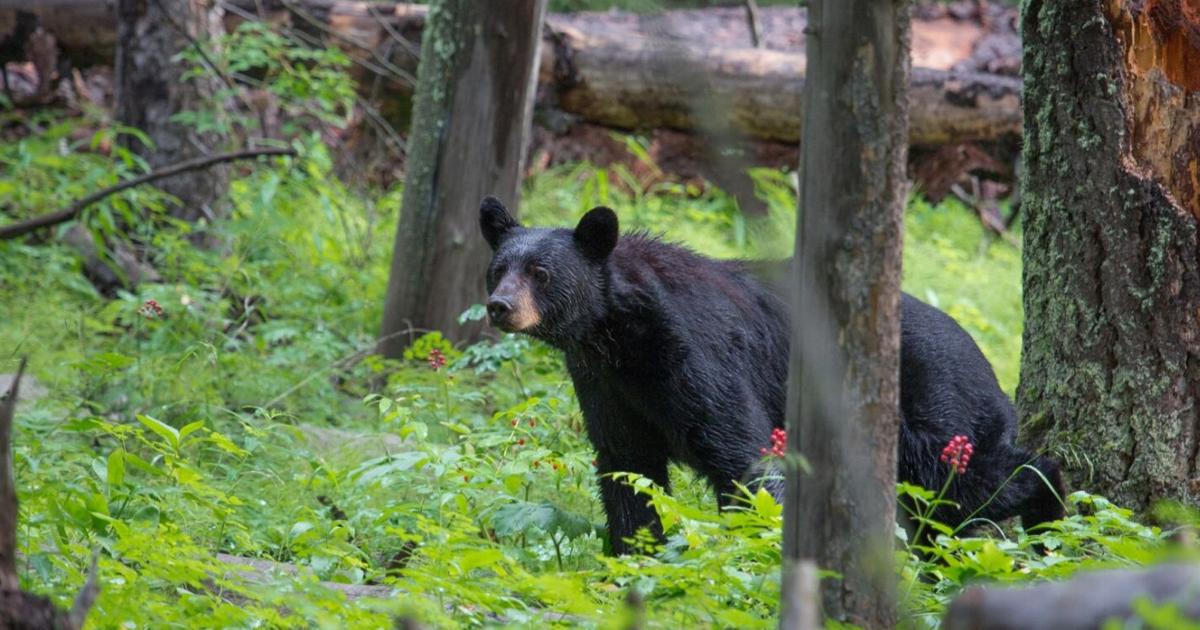
As spring approaches, the Virginia Department of Wildlife Resources wants to remind the public that both people and wild animals become more active.
The spring months are a busy time for wildlife, especially black bears as they emerge from their winter dens hungry and in search of an easy meal. During this time of increased activity, it is important for homeowners to secure all potential food sources to reduce bear encounters on their property.
Natural foods can be scarce during the early spring, so bears often look for easy food sources. Often, these sources may be your garbage, compost pile, barbeque grills, birdseed, and pet food stored outside.
“The goal is to make human sources of food harder for a bear to get than what nature provides — especially food that is high in fat and calories,” says Nelson Lafon, Forest Wildlife Program Manager for the Virginia Department of Wildlife Resources.
Bears are naturally cautious of humans, but they can overcome their wariness if people reward them with food; either intentionally by placing food out or unintentionally by not securing garbage, pet food or other food sources.
Take the following steps to avoid attracting black bears near your residence:
• Secure Garbage: Keep in a locked shed or inside until collected or use a bear resistant container.
• Take down bird feeders. For tips on attracting birds, not bears: https://bit.ly/3L8mD0v.
• Secure pet and/or livestock feed in bear resistant containers or inside locked sheds.
• Clean up porches/decks: Clean grills, remove any potential food sources, and remember a screened-in porch is not a “secure” storage area from a bear’s point of view.
• Never leave food, trash, or pet/livestock feed inside your vehicle.
“By following these steps, people can prevent most problems with bears,” said Lafon. “Our staff respond to hundreds of situations involving bears every year, and most are due to these attractants.”
In addition to adult bears being more active this time of year, it’s also the time when females with cubs begin to emerge from their winter den and start exploring the landscape. During this time, bear cubs can become separated from their mothers for short periods of time. In almost all instances no intervention is necessary and the cubs should be left alone.
When a female bear with cubs perceives a threat, whether due to barking dogs, people in the area, or otherwise, she will often “tree” her cubs. Although cubs may still be very small (normally weighing five pounds or less) they are adept climbers. The cubs will scamper high into the tree tops and await guidance from their mother on when it is safe to come back down.
The female will often leave the area, circling back periodically to check for when she feels the area is secure. If you see cubs in a tree and no female in the area, you should leave the area immediately. The female will return (often at night) and call the cubs back down when she feels there is no immediate threat to her or the cubs. Keeping the area free of disturbance (humans and particularly dogs) is critical for the female to be able to return and collect her cubs.
"activity" - Google News
April 23, 2022 at 10:24PM
https://ift.tt/mpzAo0Y
Spring brings increased bear activity | Outdoors | johnsoncitypress.com - Johnson City Press (subscription)
"activity" - Google News
https://ift.tt/ydlnKk0
https://ift.tt/kbnDdrS
Bagikan Berita Ini














0 Response to "Spring brings increased bear activity | Outdoors | johnsoncitypress.com - Johnson City Press (subscription)"
Post a Comment